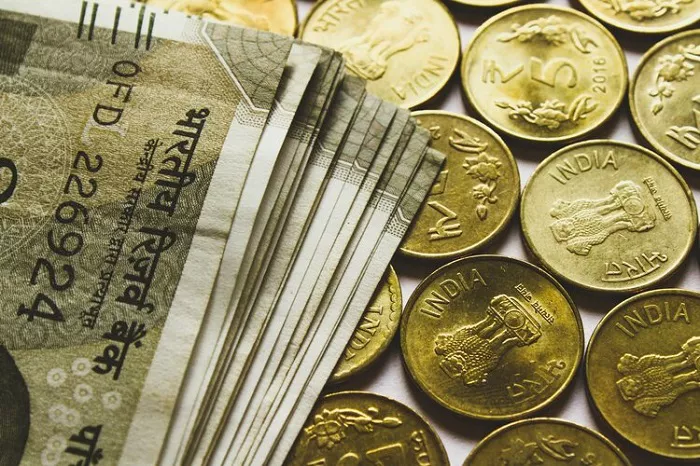In the currency market on Friday, the Indian Rupee (INR) demonstrated a positive trend during the early European trading session, leading to a decline in the USD/INR exchange rate. This movement comes as traders across the globe gear up for the release of the highly anticipated US Nonfarm Payrolls (NFP) data, a key economic indicator that could significantly impact currency markets.
Factors Boosting the Indian Rupee
The recovery in foreign inflows into the Indian market has provided a notable boost to the INR. Foreign investors are showing renewed confidence in the Indian economy, attracted by its robust growth potential. This influx of capital has increased the demand for the Rupee, driving its value higher.
Simultaneously, the US Dollar (USD) has faced headwinds. Concerns over the potential impact of US trade policies on domestic economic growth have eroded the Dollar’s safe – haven appeal. Uncertainty surrounding the implementation of new tariffs, such as the 26% tariffs on imports from India announced by President Trump on Wednesday, set to take effect from April 9, has made investors cautious. This has weakened the Dollar against a basket of currencies, including the INR.
Another contributing factor is the decline in crude oil prices. As the world’s third – largest oil consumer, India benefits greatly from lower oil prices. Since oil is predominantly traded in US Dollars, a decrease in its price reduces the demand for Dollars by Indian importers. This, in turn, eases the pressure on the Rupee, allowing it to strengthen.
Key Economic Data on the Horizon
Market participants are closely monitoring the upcoming economic data releases. Later on Friday, the final readings of India’s HSBC Composite and Services Purchasing Managers Index (PMI) are due. These figures will offer insights into the health of India’s services and overall private sector. A better – than – expected PMI reading could further support the Rupee, signaling economic expansion and increased business activity.
In the United States, all eyes are on the March employment data. The NFP report, along with the Unemployment Rate and Average Hourly Earnings figures, will be crucial in determining the future direction of the USD/INR pair. A stronger – than – expected NFP result, indicating a healthy job market, could potentially lead to a short – term boost in the Greenback against the INR. Conversely, a disappointing report may further weaken the Dollar and support the Rupee’s upward momentum.
Technical Outlook for USD/INR
Looking at the technical analysis of the USD/INR pair, it presents a bearish bias on the daily chart. The pair’s price remains below the key 100 – day Exponential Moving Average (EMA), currently at 85.87, which acts as a significant resistance level. However, the 14 – day Relative Strength Index (RSI) has dropped below the 30.00 mark, entering oversold territory. This suggests that the pair may be due for a temporary recovery or further consolidation in the near term.
If the bearish trend continues, the low of April 3 at 85.20 will serve as the initial support level. Further down, the psychological level of 85.00 and the December 19 low of 84.84 are potential areas of contention. On the other hand, if the Rupee continues to strengthen and the USD/INR pair manages to break above the 100 – day EMA, it could open the door to further upside. The next targets would be 86.48, the low of February 21, and then the round level of 87.00.
Broader Economic Context
The performance of the Indian Rupee is also influenced by various economic factors within India. The country’s average growth rate of 6.13% between 2006 and 2023 has attracted substantial foreign investment, both in the form of Foreign Direct Investment (FDI) in physical projects and Foreign Indirect Investment (FII) in financial markets. Higher levels of investment increase the demand for the Rupee.
Inflation also plays a crucial role. While inflation generally erodes the Rupee’s value by increasing the money supply, the Reserve Bank of India (RBI) steps in when inflation exceeds its 4% target. The RBI may raise interest rates to control inflation, which can strengthen the Rupee by making India a more attractive destination for international investors. Conversely, lower interest rates can have a depreciatory effect on the Rupee.
In addition, India’s trade deficit, which has been a persistent feature in recent history, impacts the Rupee. Due to high import volumes, especially during periods of seasonal demand or order surges, the demand for US Dollars spikes. This often leads to the Rupee being sold in large quantities to meet the Dollar demand, causing its value to weaken.
As traders await the release of the US NFP data and other key economic indicators, the USD/INR pair remains in a state of flux. Market participants will be closely watching for any signs of a shift in economic fundamentals or technical patterns to make informed trading decisions.
Related Topics:
USD/INR Steady Amid Global Uncertainty, Traders Eye US NFP Report
Australian Dollar Struggles Amid Market Caution Ahead of US NFP Report


